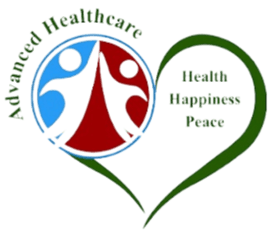
Chinese Cupping

Pain is the most common reason for seeking therapeutic alternatives to conventional medicine, and the more severe the pain,the more frequent the use of such therapies. Frequently used treatments include acupuncture, massage, and mind-body therapies.
Cupping is a physical treatment used by acupuncturists or other therapists that utilizes a glass or bamboo cup to create suction on the skin over a painful area or acupuncture point. It is mostly used in Asian and Middle Eastern countries and has been claimed to reduce pain as well as a host of other symptoms.
There are two types of cupping:
- Dry cupping pulls the skin into the cup without drawing blood.
- In wet cupping, the skin is lacerated so that blood is drawn into the cup.
A recent systematic review included five trials (two randomized clinical trials (RCTs) and three controlled clinical trials (CCTs)) on the effects of wet cupping on musculoskeletal problems. Its findings suggested that wet cupping is effective for treating low back pain.
Procedure
- Stationary/Retained Cupping: Joint pain, arthritis, myofascial pain, headaches, most used in clinic
- Sliding, Moving Cupping: Myofascial pain, scarring, headaches, often used in clinic
- Needle Cupping: Stimulates acu-points further, treating a variety of conditions including pain
- Flash Cupping: Used for facial issues – palsy, acne, sinus pressure. Cup placed, immediately removed and repeated
- Bleeding Cupping: Pain, allergies, colds, fever, herpes zoster, acne, anxiety. Blood drawn before cup applied.
An Investigation Into The Effect of Cupping Therapy as a Treatment For Anterior Knee Pain and It’s Potential Roles in Health Promotion. St. Georges University of London, UK. 006.
- Increase in mean active and passive ranges of motion, a reduction in pain scores and increase in well being immediately following treatment
- Increased improvement one, two and three weeks post-treatment
- Maximum level of pain reduced by 50% at the end of the study.
An Updated Review of the Efficacy of Cupping Therapy. University Western Sydney, Australia and Center for Evidence-Basedhinese Medicine, Beijing, China. 2012.
108 trials reviewed for various types of cupping.
Meta-analysis revealed that cupping therapy combined with other treatments (acupuncture/medications) showed significant benefit over treatments alone in effecting a cure for cervical spondylosis.
The results of this systematic review suggest that cupping therapy appears to be effective for various diseases/conditions in particular herpes zoster, acne, facial paralysis, lumbar disc herniation and cervical spondylosis.
Benefits
Increased Circulation
– Hyperaemia, vasodilation
– Increased oxygen for healing, improved ROM
– Warms tissues, increases ROM
Pain Relief
– Action similar to acupuncture or massage
– Neurotransmitter release: endorphins, serotonin, cortisol, enkephalin secretion
– Gate-Control Theory
Activates Immune System
– Releases immune modulators
– CD4 lymphocytes, natural killer cells, cytokines, immunoglobulin
Removal of Heat or Toxins
– Herpes zoster, acne Increases Sense of Well-Being
– Balances nervous system
– Decreases stress, tension
Cupping for Orthopedic Conditions
- Arthritis
- Neck and Back
- Pain
- Sciatica
- Joint Pain – elbows, knees, hips, ankles
- Frozen Shoulder
- Decreased ROM
- Muscle Strains
Call Dr. Jason Tsai today to schedule your Free Consultation.
Get in Touch
If you have any questions or comments, please fill out your information in the Contact form below.
We look forward to helping you on your journey to wellness and optimal health.
Contact Us
Call us
(954) 987-6988Send us an email
[email protected]Other website
http://www.advancedalternativecare.com
